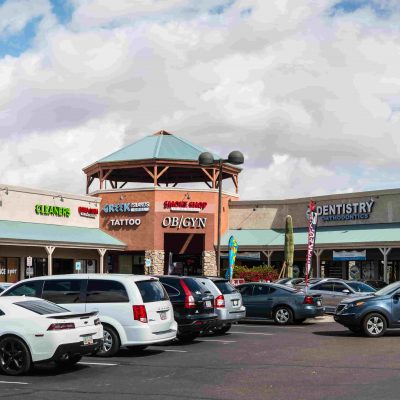Retail real estate showing positive signs but full picture still a puzzle
Original article published on Mississippi Business Journal
For an idea of where commercial real estate is headed, consider this:
Mississippi and the other 17 states in which Times Equities Inc. develops and leases retail properties are headed for a third straight year of market growth,.
Ami Ziff, Times Equities’ director of national retail and panelist on a commercial real estate forum in Jackson last week, said his firm has a strong backrow view of the shape of the retail market in Mississippi and other states is taking. “We have retail in 18 states,” he said. “We’re seeing a lot of positive things happening.”
Last year Times Equities, whose portfolio includes Jackson’s Maywood Mart Shopping Center, saw growth in rent rates in half its markets. This year, Ziff said, the growth “is in all markets.”
And even with higher rents, retailers are talking about “expansion rather than retraction,” he added. “We’re seeing retailers looking at second, third and fourth stores with us.”
The firm also has placed new tenants in space left empty by retail downsizings in recent years, according to Ziff.
A pair of those occurred at the 102,200 square-foot Maywood Mart. National retailer Hibbett Sporting Goods recently took 8,000 square feet and Dollar Tree 8,295 square feet.
The longtime retail complex is at the busy Northside Drive intersection, which has a daily traffic count of around 145,000 vehicles, Times Equities said in a press statement.
Market-wide, said Ziff, Times Equities is “running about 90 percent occupancy and 75 percent of our space is 5,000 square feet or larger.”
As a panelist on the Mississippi Chapter of CCIM-sponsored forum April 17, Ziff joined Lt. Gov. Tate Reeves, Don Cannada of Butler Snow, Sam Colson of Net Lease Alliance, Steve Rogers of Rogers and Associates, Forrest Speed of Colliers International, Atlanta, and Chris Abadie of Sterling Properties.
Sterling Properties has commercial properties in Mississippi, Alabama and portions of the Florida panhandle. As Sterling’s VP and manager of commercial brokerage, Abadie said he looks at the firm’s market not so much by state but by activity along the Interstate 10 and Interstate 20 corridors. He is witnessing I-10 come alive as an industrial corridor. Interstate-20, on the other hand, “is struggling some,” he said, and noted the industrial sector is driving the growth that is occurring within the corridor.’
Abadie is seeing retail as a puzzle of sorts. Retailers are reporting to Wall Street that they are going to expand — but they aren’t, except “down here,” he said, where some store categories are reaching saturation.
Space absorption is increasing, “because there is no alternative space” Abadie added. “Not much is getting built.”
Don Cannada, a real estate lawyer with Ridgeland’s Butler Snow, said “Madison and Rankin counties are going strong” on the retail front, as shown by the Outlets of Mississippi retail complex that opened late last year and the recently closed purchase of land in the city of Madison for a modernized Sams Club to replace the one on Jackson’s County Line Road.
He said he is also witnessing “a lot of retail work on the coast.”
Cannada advised the panel to keep a watch on commercial activity in South Mississippi related to the energy sector. “There are a lot of energy companies who are looking to locate or expand because of the resources and regulatory environment,” he said, citing the natural gas pipeline and other infrastructure.
Reeves, an investment professional before entering politics, pointed out the disconnect between the enthusiasm of Wall Street investors and the malaise of wage earners. The rebound of the Dow Jones Index from its low of 7,000 points at the peak of the recession to today’s 16,000 has not put much of spring in the step of the average Mississippi worker, Reeves said.
They’ll ask themselves, “Do I feel two-and-a-half times better today than I did in 2010, even though the market has grown two-and-a-half times?’”
Continued improvement of Mississippi’s unemployment rate would help alter the less-than-optimistic feeling among Mississippians. At 7.4 percent, it still has ground to make up, Reeves said.
“I hear a lot of talk about the ‘new normal’. I don’t know what the new normal is but our current unemployment rate would suggest we have a lot of room for growth,” he said.
Nonetheless, Mississippi has seen some commercial successes in recent years, Reeves said, beginning with the turnaround in DeSoto County. It had a lot of peaks and valleys in the last decade but now seems “to be recovering well,” he noted.
Hattiesburg, Reeves said, seems to be seeing significant growth spurred by a huge medical sector, the University of Southern Mississippi and the new medical school at William Carey University.
Further, the lieutenant governor said, “The suburbs of Jackson seem to be recovering from a real estate standpoint very well.”
Steve Rogers, former president & CEO of Parkway Properties and current principal of Rogers and Associates, said he expects Mississippi’s recovery to take another couple years. Even though Mississippi did not go bust in any great way in the last decade, “We’ll probably come out of it slowly,” Rogers said of the stubbornly high jobless rate and slow pace of economic activity.

